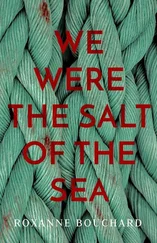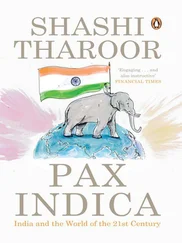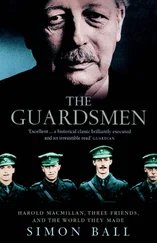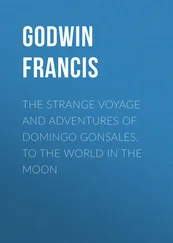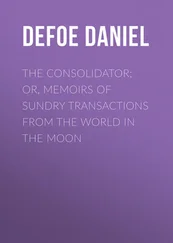Fleeing the GDR was now punishable with up to three years imprisonment. The laws were tightened further in 1957 when preparations to flee and attempted escapes were also made punishable. 12Restrictions by the GDR officials on approved travel to the West also followed. Permission to travel to the West depended on one’s age and job. Students, for example, were not permitted to travel to West Germany or any western countries.
THE BERLIN ULTIMATUM AND CRISIS
In autumn of 1958, Soviet party and state leader Nikita Khrushchev triggered the Second Berlin Crisis with an ultimatum to the Western Allies. 13If the Allies did not comply with these orders within six months, he would carry out his planned measures within the GDR and grant it its own statehood. Khrushchev wanted to use Berlin’s vulnerability as leverage for his political goals and to cement recognition of the situation in Europe created by World War II. Furthermore, he wanted to prevent nuclear disarmament and reduce the West German military.
His suggestion to make Berlin a “free city”, aimed to get rid of the four-power-status and left the West fearing that the Soviets did actually intend to integrate West Berlin into their zone.
With this solution intending to weaken the West 14, Khrushchev also wanted to close the loophole around Berlin and gain control of the refugee problem. The Soviets were no longer striving for reunification. However, the western Allies were not prepared to give up their rights and rejected his demands. This advance from the Soviets caused more unrest amongst the people and, in turn, led to a renewed wave of refugees. Many GDR citizens feared that the escape route through Berlin would be lost forever.
The meeting of newly elected American President John F. Kennedy with Soviet leader Nikita Khrushchev in Vienna on June 3 and 4, 1961, coincided with this tense situation. Khrushchev pushed for the signing of a peace treaty and threatened once again to enforce this on the GDR if America was not prepared to agree to his demands. A separate peace treaty would also be offered to West Germany. Such a treaty would mean the end of the war and nobody would be forced to surrender. This would concern the entire law of occupation as well as access to Berlin including the airlift. Khrushchev threatened that any violation of GDR ruling would be classified as a declaration of war.
Kennedy, on the other hand, made it clear that Khrushchev’s proposal would deprive the United States of its legal rights to be present in Berlin and thus of its ability to fulfil its obligations to the city’s two million residents. This would shake the credibility and confidence of the partners in the United States. Therefore, due to his political responsibility, he could not approve this. It was not about Berlin, it was about the whole of western Europe as well as U.S. state security, to which Berlin was of crucial strategical importance. Kennedy wanted to maintain the balance of power in the post-war order as he thought any shift would be detrimental. Both representatives of the major powers left Vienna without reaching agreement. In an address to the nation on July 25 th, 1961, Kennedy once again stated the principles that applied to West Berlin and would be defended by the United States. Kennedy once again named the “Three Essentials” directing the U.S. course of action in West Berlin: 1) the right of western Allies to be present in Berlin, 2) the right to free access to the city, 3) securing the livelihood of West Berlin and its citizens. These principles were publicized worldwide in a large-scale information campaign. Kennedy formulated them specifically for West Berlin and not the whole of the city, as the special status would have implied. This position signalled to the Soviet Union that Kennedy respected its original victors’ rights in its sector and accepted border closure in the interest of avoiding military confrontation. 15
THE GDR BEFORE THE BUILDING OF THE WALL
At the start of the summer holidays in 1961, the amount of people fleeing the GDR soared. Many people disguised their escape as a holiday. This was a reaction to the foreign policy as well as the dramatic economic climate and the drastic supply problems that continually escalated. 16
As part of a propaganda offensive, the GDR government depicted the refugee movement as a specific method of alienation from the West. In order to prevent further escapes, the GDR set up “human trafficking committees”. Alleged “human traffickers” were sentenced to harsh sentences in staged trials. By doing this, the government wanted to distract attention from the truth that people were leaving the GDR of their own free will. So-called border workers were also targeted. These were people who lived in East Berlin but worked in West Berlin. 17They were inspected more frequently at the border and some had their passports and ID taken from them so that they were no longer able to go to work in the West. Their number had risen to 56,000 due to the economic disparity between West and East Berlin before the Wall was built. 18
Border workers were paid partly in West German currency and the GDR government used this as propaganda to cause jealousy and resentment amongst the people towards the border workers and also as a means to justify the harsh state treatment towards them. Any wages paid in West German currency were subject to a compulsory exchange. Many services could be exchanged in the GDR for West German cash. In early August, the border workers were forced to give up their jobs in the West and register as job-seekers in the GDR.
GDR propaganda aimed to denounce West Berlin as a dangerous trouble spot in the East-West conflict. The GDR’s campaign accused the FRG government of intensive war preparations, aiming to conquer the GDR and parts of Poland.
The increasing measures taken against refugees and border workers, as well as the fierce propaganda campaigns in the GDR, increased suspicions in the West that it would not just be individuals who were victimised by the GDR government. A televised speech by Khrushchev on 7 thAugust 1961 caused many of those watching to fear that a Wall may be built along the Berlin border. People assumed, however, that the measures would be enforced along the “ring around Berlin”. Nobody thought that the city would be cordoned off. That was a massive error of judgement, as would soon be proved.
DECISION TO BUILD THE WALL AND PREPARATIONS TO CLOSE THE BORDER
According to statements by Jan Šejna, the Czechoslovakian deputy defence minister who defected to the West in 1968, Walter Ulbricht, the chairman of the GDR’s Council of State and head of the SED party, had already put forward the idea of building a barbed wire barrier through Berlin at a Warsaw Pact meeting on March 28 thand 29 th, 1961. 19Against this background, Ulbricht’s statement at the press conference on June 15 th, 1961, that no one had any intention of building a Wall becomes understandable; the events of August 13 thwere to finally expose it as a lie. The fact that large quantities of construction materials such as fence posts and barbed wire were already being stored in Berlin in order to implement such barrier measures also points to longer-term planning. The decision to close the border was finally made in July and early August 1961. 20
After the Vienna summit and the dramatic supply crisis in the GDR, which in turn lead to increasing levels of people fleeing the GDR, Ulbricht decided upon a propaganda offensive. In it he demanded the solution of the Berlin question and the conclusion of a peace treaty. At the same time, Ulbricht urged the Soviets to close the borders immediately. Khrushchev made his decision (probabely on 20 thJuly), and insights into the intelligence agencies regarding the military strength of the western powers, American politics and planned defensive measures. 21The Warsaw Pact states would also be involved in the decision. From August 3 rdto 5 th, 1961, a conference of their party leaders was held in Moscow to discuss the problems associated with the proposal of a peace treaty and that of the open border with West Berlin. Walter Ulbricht was criticised by his counterparts for slow economic growth and high consumer spending in the GDR. Ulbricht underlined his own position that the border to West Berlin was to be held responsible and demanded it to be closed with immediate effect. However, the Warsaw Pact states feared incalculable economic sanctions in the event of a border closure, which would not only affect the GDR.
Читать дальше

